Enhancing the blossoming of fruit trees is crucial for a bountiful harvest. This guide, tailored for beginners, simplifies the process into manageable steps. It delves into essential practices, from soil preparation to pruning techniques, ensuring your fruit trees flourish with vibrant flowers.
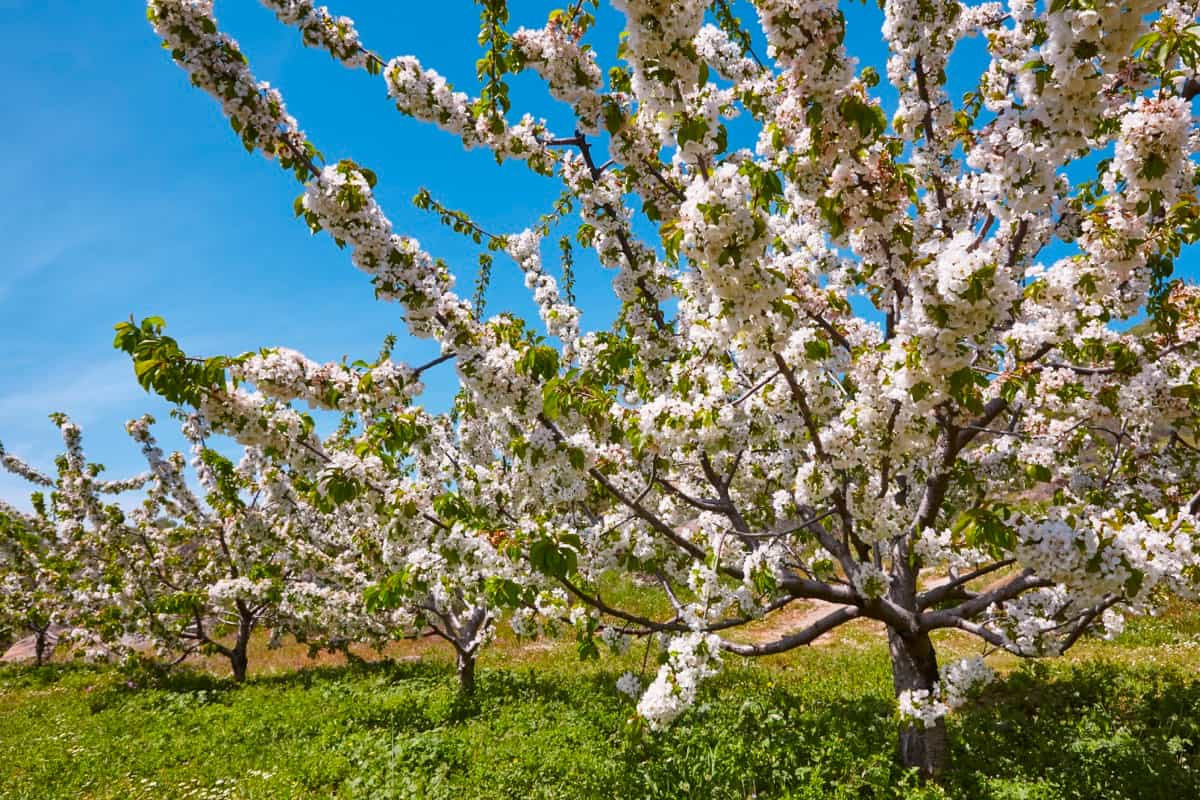
Ideal for gardening enthusiasts, this introduction paves the way for a journey into the art of maximizing fruit tree flowering. Flowering is a crucial stage in the life cycle of fruit trees, as it determines the potential yield and quality of the fruits. However, many factors can affect the flowering process, such as climate, soil, water, nutrition, pests, diseases, pruning, and pollination.
How to Increase Flowering in Fruit Trees
Choosing the Right Fruit Tree Varieties for Optimal Flowering
The first step to increase flowering in fruit trees is to choose the right varieties that are suitable for climate, soil conditions. Different fruit tree species and cultivars have different requirements for chilling hours, heat units, day length, and sunlight exposure to initiate and sustain flowering.
For example, some apple varieties need more than 1000 hours of chilling (temperatures below seven °C) to break dormancy and flower, while others need less than 500 hours. Similarly, some mango varieties need high temperatures and long days to induce flowering, while others need cooler temperatures and short days. Therefore, you should select fruit tree varieties that match your local environment and can produce abundant and consistent flowers.
Providing Adequate Sunlight for Fruit Tree Flowering
Sunlight is essential for fruit tree flowering, as it provides the energy for photosynthesis, produces carbohydrates that are stored in the buds and used for flower development. Sunlight also influences the hormonal balance of the plant, which regulates the transition from vegetative to reproductive growth.
In case you missed it: Best Fertilizers to Increase Crop Yield: Boost the Yields of Vegetables, Fruits, Flowers, and Other Crops
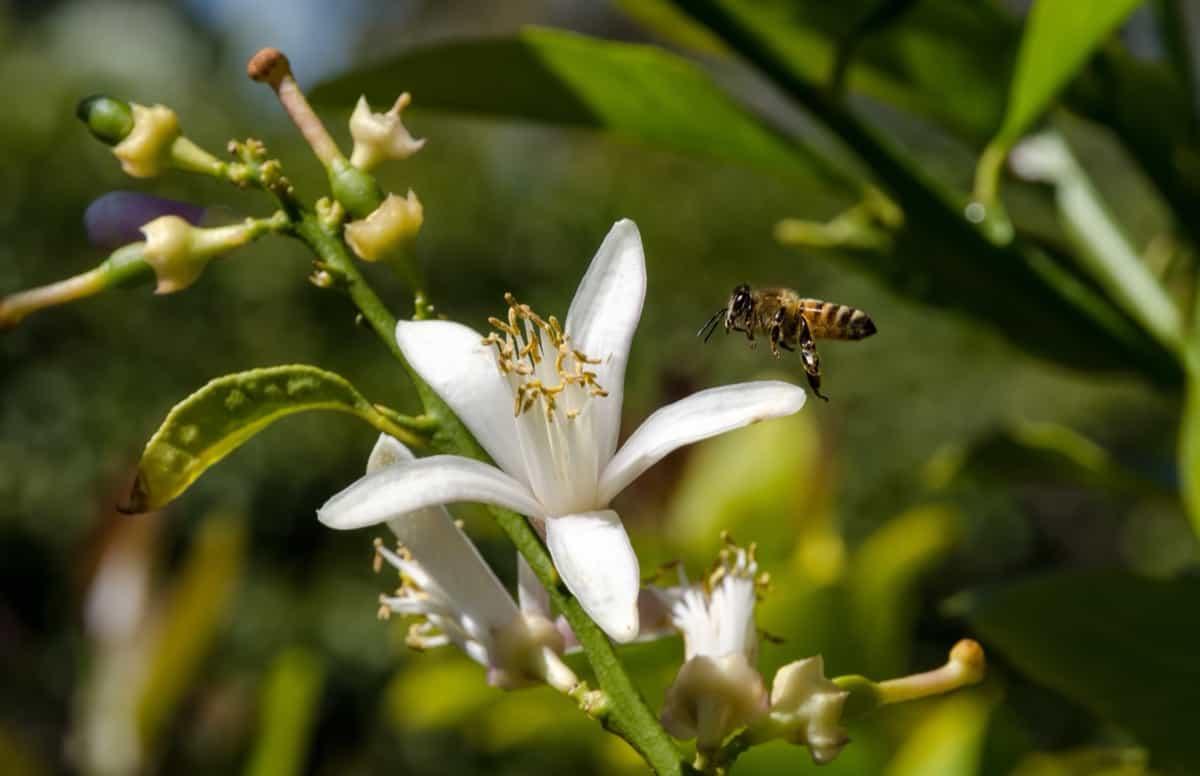
Generally, fruit trees need at least 6 hours of direct sun per day to flower well. However, some fruit trees can tolerate or even prefer partial shade, such as currants, medlars, and sapotes. You should avoid planting your fruit trees in areas that are shaded by buildings, fences, or other plants. It would help if you also pruned your fruit trees regularly to remove excess branches and leaves that block the sunlight from reaching the buds.
Proper Soil Preparation and Nutrient Management for Flowering
Soil preparation and nutrient management are important steps to increase flowering in fruit trees, as they affect the water availability, root health, and nutrient uptake of the plant. Fruit trees need well-drained soils that are rich in organic matter and have a pH range of 5.5 to 7.5. You should avoid planting your fruit trees in compacted, saturated, or alkaline soils that can reduce root growth and function.
You should also amend your soil with organic manures and composts to improve its structure, fertility, and microbial activity. Nutrient management is crucial for fruit tree flowering, as it influences the carbohydrate status and hormonal balance of the plant. Fruit trees need a balanced supply of macronutrients (nitrogen, phosphorus, potassium) and micronutrients (calcium, magnesium, iron, zinc) to support their growth and development.
Watering Techniques to Enhance Flowering in Fruit Trees
Water is essential for the growth and development of fruit trees, but it can also influence their flowering behavior. Too much or too little water can reduce the number of flowers or cause them to drop prematurely. Therefore, it is important to apply the right amount of water at the right time to optimize flowering.
- Water deeply and infrequently to encourage deep-root development and drought tolerance.
- Avoid overwatering or waterlogging, as this can cause root rot, nutrient leaching, and reduced oxygen availability.
- Reduce watering frequency and amount during the dormant season (winter) to induce water stress and stimulate flower bud formation.
- Increase watering frequency and amount during the flowering season (spring) to support flower development and prevent wilting.
- Monitor soil moisture levels using a soil moisture meter/by feeling the soil with your fingers.
- Mulch the soil surface with organic matter to maintain soil moisture and reduce evaporation.
In case you missed it: 14 Natural Ways to Treat Fruit Rot: Organic Homemade Recipes for Preventing Fruit Rot
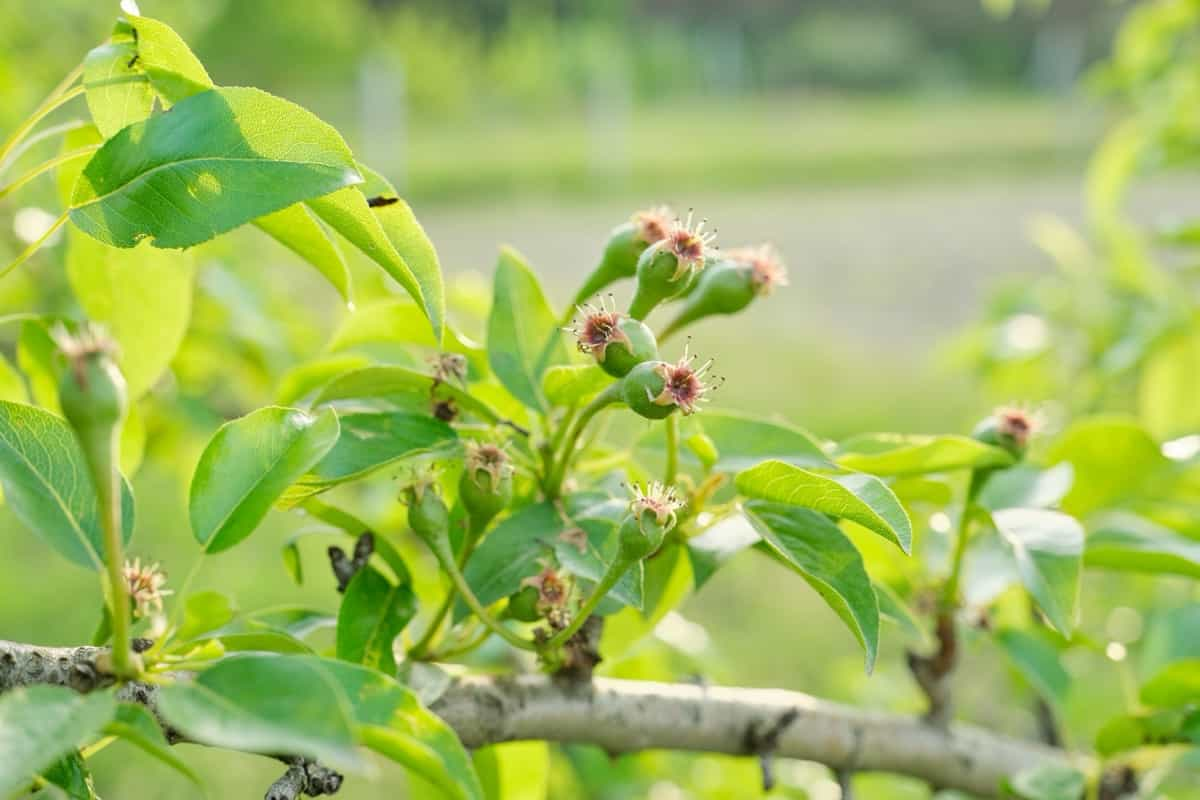
Pruning and Training Fruit Trees for Increased Flower Production
Pruning and training are essential practices for maintaining the shape, size, health, and productivity of fruit trees. Pruning involves removing unwanted branches, twigs, leaves, or fruits, while training involves bending, tying, or supporting branches to direct their growth. Pruning and training can affect the flowering of fruit trees in several ways:
- Pruning can remove excess vegetative growth and redirect resources to flower production.
- Pruning can improve light penetration, air circulation within the canopy, which can enhance flower quality and pollination.
- Pruning can remove diseased and damaged branches, which can reduce the risk of infection and improve tree vigor.
- Training can create a balanced and open canopy structure, which can facilitate flower formation and distribution.
- Training can influence the orientation and angle of branches, which can affect their hormonal balance and flowering response.
The optimal pruning and training technique depends on the type of fruit tree, the desired shape and size, the age and vigor of the tree, and the time of year.
- Prune fruit trees during the dormant season (winter) to avoid sap loss and wound infection.
- Prune lightly and selectively to avoid over-pruning or removing too many flower buds.
- Prune according to the type of fruiting wood (spur-bearing or tip-bearing) to preserve the most productive branches.
- Train fruit trees during the growing season (spring or summer) to avoid breaking or damaging branches.
- Train fruit trees according to their natural growth habit (central leader or open center) to create a stable and efficient framework.
- Train fruit trees using appropriate tools (stakes, wires, ties) to support their weight and shape.
Implementing Effective Pest and Disease Management Strategies
One of the most important steps to increase flowering in fruit trees is to protect them from pests and diseases that can damage the buds, flowers, or fruits. Some common pests that affect fruit trees are aphids, scale insects, mites, caterpillars, borers, and fruit flies. Some common diseases that affect fruit trees are fungal infections, bacterial infections, viral infections, and nutritional disorders.
- Monitor trees regularly for signs of pests and diseases and identify them correctly.
- Use cultural methods such as sanitation, pruning, mulching, and crop rotation to reduce pest and disease pressure.
- Use biological methods such as beneficial insects, birds, or microorganisms to control pests or diseases naturally.
- Use physical methods such as traps, barriers, nets, or hand-picking to remove pests or diseases manually.
- Use chemical methods such as pesticides or fungicides only as a last resort, and follow the label instructions carefully.
In case you missed it: Government Subsidy for Fruit Crops in India: How to Avail up to 40-60% under MIDH
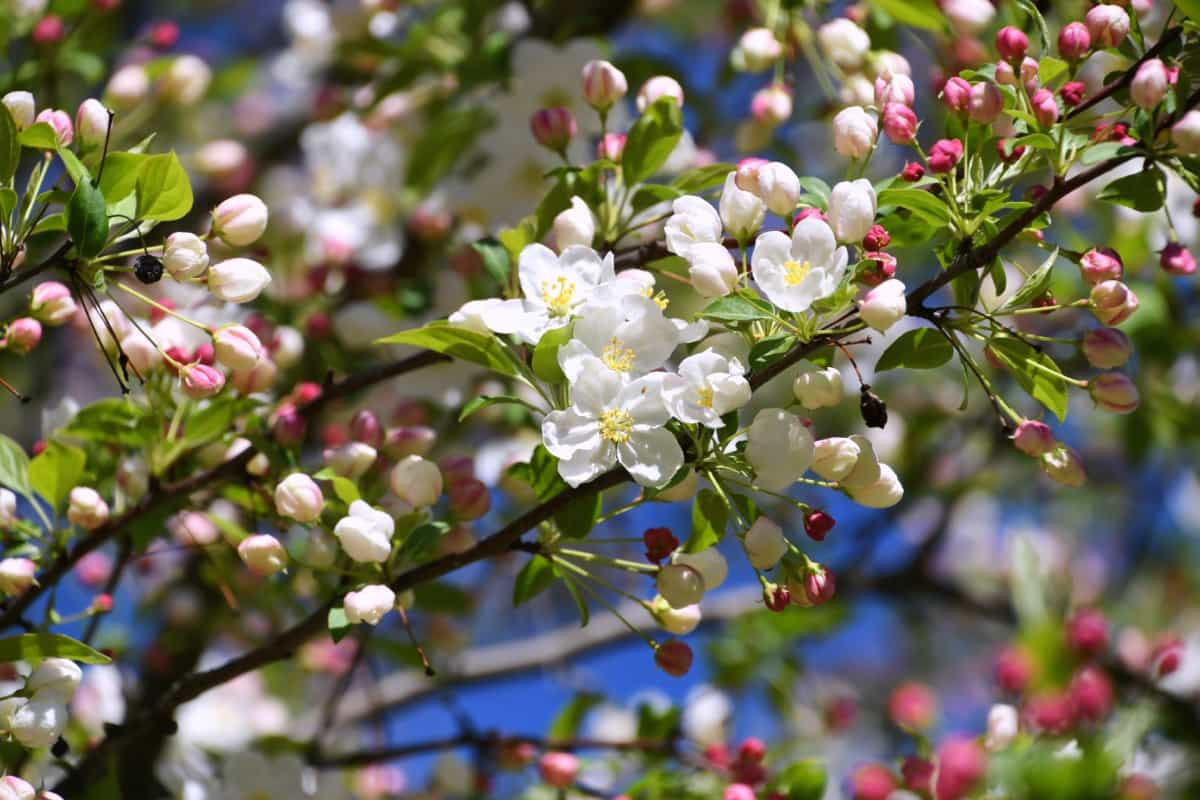
Utilizing Pollination Techniques to Boost Flowering
- Pollination is the process of transferring pollen from the male part of a flower anther to the female part of a flower stigma. Pollination is essential for fruit set and quality. Some fruit trees are self-pollinating, which means they can produce fruits from their pollen. Some fruit trees are cross-pollinating, which means they need pollen from another tree of the same or compatible species to produce fruits.
- Plant compatible varieties of cross-pollinating fruit trees near each other or graft compatible branches onto the same tree.
- Encourage pollinators such as bees, butterflies, or birds to visit your fruit trees by providing them with food, water, shelter, and nesting sites.
- Avoid spraying pesticides or fungicides during flowering or when pollinators are active.
- Supplement natural pollination with artificial pollination by using a brush, cotton swab, or spray bottle to transfer pollen from one flower to another.
Controlling Temperature and Humidity for Enhanced Flowering
Temperature and humidity are environmental factors that affect flowering and fruit sets in fruit trees. Temperature affects the development of flower buds, the opening of flowers, the viability of pollen, and the fertilization of ovules. Humidity affects the germination of pollen on the stigma and the growth of pollen tubes.
- Choose varieties of fruit trees that are adapted to your climate zone and microclimate conditions.
- Avoid planting fruit trees in frost-prone areas or provide frost protection such as covers, heaters, or sprinklers.
- Avoid planting fruit trees in heat-stressed areas or provide shade cloth, misting systems, or evaporative cooling.
- Avoid planting fruit trees in waterlogged areas or provide drainage systems or raised beds.
- Avoid planting fruit trees in drought-prone areas or provide irrigation systems or water-conserving mulches.
Timing and Frequency of Fertilization for Optimum Flower Production
Fertilization is the process of applying nutrients to plant soil or foliage to enhance plant growth and development. Fertilization is important for flowering and fruit set in fruit trees because it affects the quantity and quality of flower buds, flowers, and fruits. However, over-fertilization or under-fertilization can also have negative effects on flowering and fruit sets.
- Test your soil regularly for nutrient levels and pH and amend it accordingly.
- Choose fertilizers that are suitable for your soil type and fruit tree species.
- Apply fertilizers at the right time and frequency according to the stage of growth and development of your fruit trees.
- Apply fertilizers at the right rate and method according to the label instructions.
- Avoid applying fertilizers during flowering or when fruits are developing.
In case you missed it: Popular Dwarf Fruit Varieties Grow Easily in Containers: Full Guide for Beginners
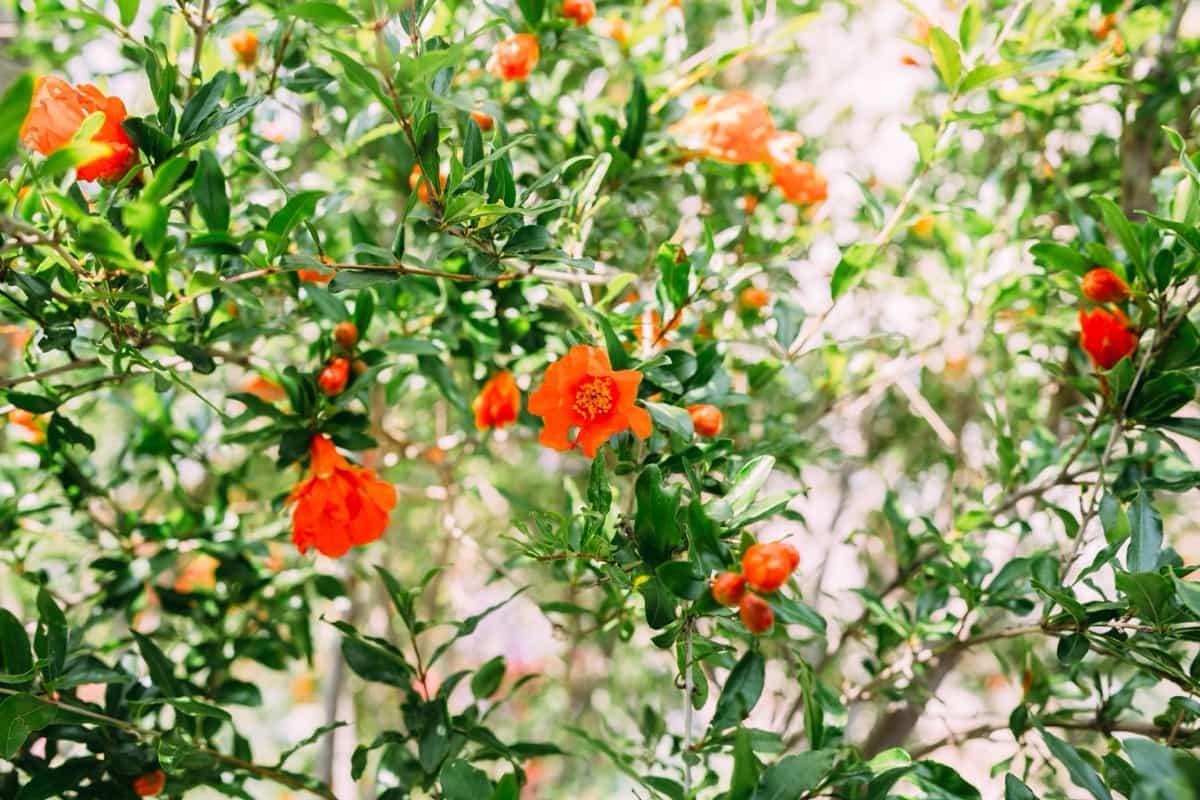
Using Growth Regulators to Stimulate Flowering in Fruit Trees
Growth regulators are substances that affect the growth and development of plants by influencing their hormones. Growth regulators can be used to stimulate flowering in fruit trees by inducing flower bud formation, breaking dormancy, enhancing flower opening, increasing pollen production, or extending flowering duration.
- Choose growth regulators that are registered and approved for your fruit tree species and purpose.
- Follow the label instructions carefully for the dosage, timing, frequency, and method of application.
- Monitor the effects of growth regulators on your fruit trees and adjust the application accordingly.
- Avoid using growth regulators excessively or unnecessarily, as they can have adverse effects on fruit quality or tree health.
Enhancing Root Health and Development for Improved Flowering
Roots are the organs that absorb water and nutrients from the soil and transport them to the rest of the plant. Roots are vital for flowering and fruit set in fruit trees because they affect the water and nutrient status, the hormone balance, and the stress tolerance of the plant.
- Choose rootstocks that are compatible, vigorous, and resistant to pests and diseases for your fruit tree species and scion variety.
- Plant your fruit trees at the right depth, spacing, and orientation to allow adequate root growth and expansion.
- Prune your fruit trees regularly to maintain a balance between root growth and shoot growth.
- Mulch your fruit trees with organic materials such as straw, wood chips, or compost to conserve soil moisture, moderate soil temperature, suppress weeds, and add organic matter.
- Avoid injuring or damaging the roots of your fruit trees by digging, tilling, mowing, or compacting the soil.
Managing Weed Competition for Enhanced Flower Production
Weeds are plants that grow where they are not wanted or needed. Weeds can reduce flowering and fruit set in fruit trees by competing with them for water, nutrients, light, space, or pollinators. Weeds can also host pests and diseases that can infect or damage the buds, flowers, or fruits of fruit trees.
- Identify the weeds that are present in your orchard and learn about their life cycle, characteristics, and impacts.
- Use cultural methods such as mulching, mowing, hoeing, or hand-weeding to prevent or remove weeds manually.
- Use biological methods such as grazing animals, beneficial insects, or allelopathic plants to suppress or eliminate weeds naturally.
- Use chemical methods such as herbicides or weed killers only as a last option.
Protecting Fruit Trees from Frost and Cold Temperatures
Frost is the process of formation of ice crystals on the surface of plants or objects when the air temperature drops below freezing. Frost can damage or kill the buds, flowers, or fruits of fruit trees by causing cell rupture, dehydration, or necrosis. Cold temperatures can also reduce flowering and fruit set in fruit trees by delaying bud break, inhibiting pollen germination, or affecting ovule development.
In case you missed it: 8 Best Organic Composts to Buy in India for Flowering Plants, Vegetables, and Lawn
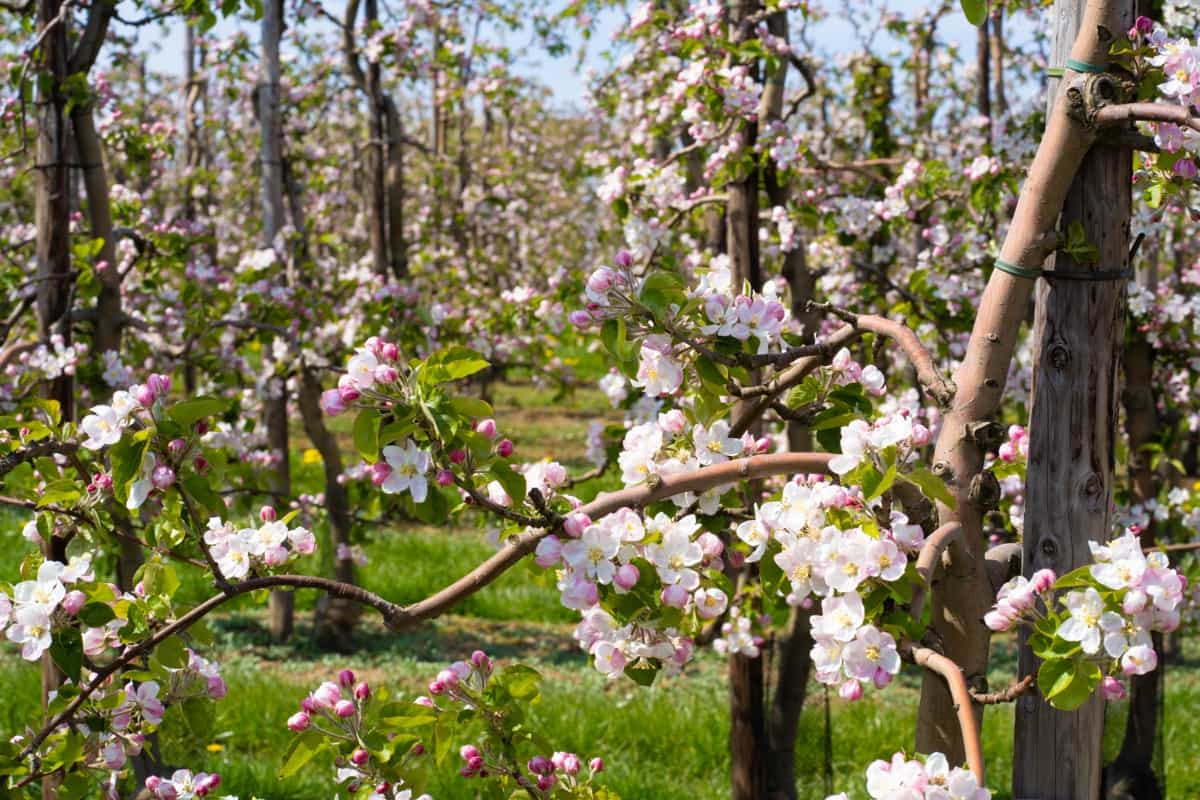
- Choose varieties of fruit trees that are hardy, late-blooming, or frost-resistant for your climate zone and microclimate conditions.
- Plant your fruit trees in sites that are sheltered from cold winds, have good air drainage, or have a heat source nearby.
- Cover your fruit trees with blankets, tarps, plastic sheets, or frost cloth to trap heat and prevent frost formation.
- Spray your fruit trees with water before a frost event to create a protective layer of ice that insulates the plant tissue from freezing.
- Use heaters, fans, or sprinklers to provide heat or air movement to prevent frost formation.
Conclusion
Flowering and fruit set are critical stages in the production cycle of fruit trees. By following these steps to increase flowering in fruit trees, you can improve your chances of having a successful harvest. However, keep in mind that flowering and fruit sets are also influenced by genetic factors that are beyond your control. Therefore, you should always select varieties of fruit trees that are suitable for your growing conditions and expectations.
- Types of Pesticides Used in Agriculture: A Beginner’s Guide
- Economical Aquaculture: A Guide to Low-Budget Fish Farming
- 15 Common Planting Errors That Can Doom Your Fruit Trees
- How to Make Houseplants Bushy: Effective Tips and Ideas
- Innovative Strategies for Boosting Coconut Pollination and Yield
- Pollination Strategies for Maximum Pumpkin Yield
- The Complete Guide to Chicken Fattening: Strategies for Maximum Growth
- Natural Solutions for Tulip Problems: 100% Effective Remedies for Leaf and Bulb-Related Issues
- Revolutionizing Citrus Preservation: Towards a Healthier, Greener Future
- Natural Solutions for Peony Leaf and Flower Problems: 100% Effective Remedies
- Maximizing Profits with Avocado Contract Farming in India: A Comprehensive Guide
- Natural Solutions for Hydrangea Problems: 100% Effective Remedies for Leaf and Flowers
- The Ultimate Guide to Choosing the Perfect Foliage Friend: Bringing Life Indoors
- From Sunlight to Sustainability: 15 Ways to Use Solar Technology in Agriculture
- The Ultimate Guide to Dong Tao Chicken: Exploring from History to Raising
- The Eco-Friendly Makeover: How to Convert Your Unused Swimming Pool into a Fish Pond
- Mastering the Art of Delaware Chicken Farming: Essentials for Healthy Backyard Flocks
- 20 Best Homemade Fertilizers for Money Plant: DIY Recipes and Application Methods
- How to Craft a Comprehensive Free-Range Chicken Farming Business Plan
- Brighten Your Flock: Raising Easter Egger Chickens for Beauty and Bounty
- How to Optimize Your Poultry Egg Farm Business Plan with These Strategies
- Subsidy for Spirulina Cultivation: How Indian Government Schemes Encouraging Spirulina Farmers
- Ultimate Guide to Raising Dominique Chickens: Breeding, Feeding, Egg-Production, and Care
- Mastering the Art of Raising Jersey Giant Chickens: Care, Feeding, and More
- Ultimate Guide to Raising Legbar Chickens: Breeding, Farming Practices, Diet, Egg-Production
- How to Raise Welsummer Chickens: A Comprehensive Guide for Beginners
- How to Protect Indoor Plants in Winter: A Comprehensive Guide
- Ultimate Guide to Grow Bag Gardening: Tips, Tricks, and Planting Ideas for Urban Gardeners
- Guide to Lotus Cultivation: How to Propagate, Plant, Grow, Care, Cost, and Profit
- Agriculture Drone Subsidy Scheme: Government Kisan Subsidy, License, and How to Apply Online
- Ultimate Guide to Raising Araucana Chickens: Breed Profile, Farming Economics, Diet, and Care
- Bringing Hydroponics to Classroom: Importance, Benefits of Learning for School Students
- Ultimate Guide to Raising Polish Chickens: Breed Profile, Farming Economics, Diet, and Care
- Ultimate Guide to Raising Australorp Chickens: Profile, Farming Economics, Egg Production, Diet, and Care
- Silkie Chicken Farming: Raising Practices, Varieties, Egg Production, Diet, and Care
- Sussex Chicken Farming: Raising Practices, Varieties, Egg Production, Diet and Care